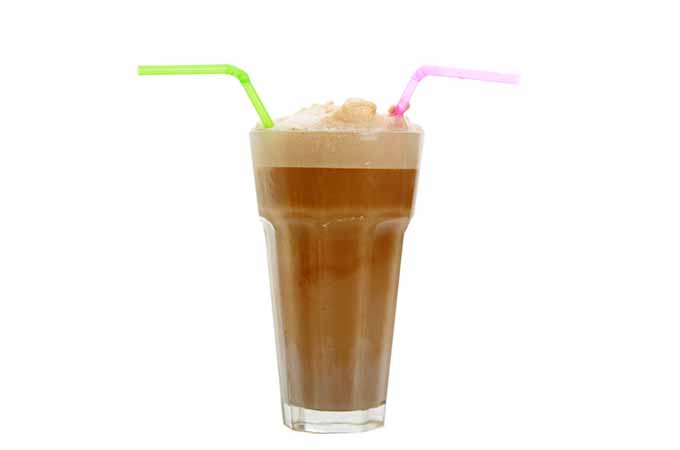
Who doesn’t love a sweet desert or snack? Unfortunately, large sugar intakes, and high calorie intakes often associated with sweets, have been linked with various health problems like diabetes, obesity, and bad dental health.
Moderation is key when satisfying your sweet tooth. Swearing off sweets altogether is no fun, but with these ten sweet snacks that weigh in at 150 calories or less, you don’t have to.
1.Root Beer Floats
Root beer floats are a classic American summertime treat, but it doesn’t have to be sweltering outside to enjoy this creamy, delicious snack.
A half-cup of lite vanilla ice cream has only 100 calories, and a can of diet root beer has zero.
To make an original root beer float, chill a tall glass in the freezer for fifteen minutes.
Your soda should be ice-cold too, so that it doesn’t melt the ice cream too quickly. You can put the soda in the freezer while your glass chills to ensure the coldest possible root beer.
Scoop a half cup of lite vanilla ice cream into the glass, and slowly pour the soda over it. Let it fizz up and settle, then top it off with soda until it’s full to the brim. Top off this icy treat with a straw and a spoon, and have at it.
If you’re the adventurous type, or despise root beer, don’t limit yourself to a classic root beer float. Experimenting can be half the fun. Here are a few variations on the traditional float.
A Pepsi float will give you an inkling of why Laverne was so enamored with milk and Pepsi on the classic TV sitcom “Laverne & Shirley.” To make this sweet treat, simply substitute the root beer with Diet Pepsi (or your favorite diet soda.)
A chocolate chip cherry float may be dangerous, because you’ll probably want way more than one. Scoop a half cup of lite cherry chip ice cream into the glass and top it off with diet cherry soda.
If you love orange soda, you’ll find that an orange float is to die for. Scoop ¼ cup each of lite vanilla ice cream and lite orange sherbet into the frost glass and top it off with diet orange soda. Don’t be afraid to make up your own sweet variations on the classic float by combining your favorite soda and ice cream flavors.
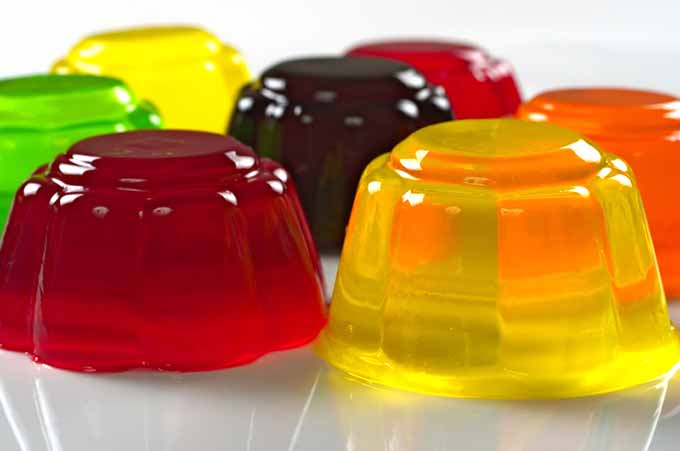
2. Jell-O
Jello may wiggle, but it won’t make you jiggle. Jell-O has a mere 80 calories per half-cup serving, and it comes in a huge variety of flavors.
If you’re a purist, feel free to whip up a box of Jell-O and eat it just as it is. But if your sweet tooth likes a little more adventure, try mixing in some additional ingredients to take this simple, sweet dessert to a whole new level.
Two tablespoons of Cool Whip has a mere 25 calories, so adding a few generous dollops to your Jell-O won’t rack up many more calories than the original 80.
You can add virtually any kind of fruit to any flavor of Jell-O, increasing the nutritional value of this sweet snack while adding only a few calories.
Try a combination of fresh raspberries and blue raspberry Jell-O, fresh sliced strawberries and strawberry-banana Jell-O, or pineapple chunks and lime Jell-O.
For a creamy, frozen treat the whole family can enjoy on sweltering summer days, prepare two or three boxes of your favorite Jell-O flavors, using only 2/3 cup of boiling water per flavor.
Pour each flavor into a separate shallow pan and refrigerate until firm. Cut the Jell-O into cubes. Combine one package of Jell-O vanilla instant pudding mix with two cups of cold milk and whisk it for two minutes.
Add the Jell-O cubes to the pudding, pour into Dixie cups, add a stick and freeze for at least four hours. Each popsicle weighs in at a mere 150 calories. To increase the nutritional value and add more flavor without a lot of additional calories, add diced fresh fruit to each of the Jell-O flavors.
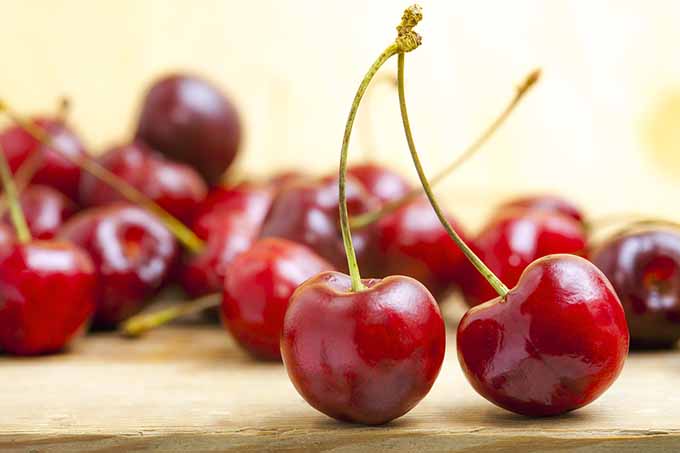
3. Cherries
Fresh cherries are sweet and delicious, and at five calories each, you can eat a whopping 30 of them for 150 calories.
Not only are cherries ultra sweet and tasty, they also have incredible health benefits. They’re a great source of antioxidants, which repair and prevent damage to your cells caused by free radicals.
They are also a major player in the fight against cancer: Cherries are high in the anti-cancer flavondoid queritrin, the anti-carcinogenic ellagic acid, and perillyl alcohol, which deprives cancer of the proteins they need to grow.
You can eat your cherries straight from a bowl, or you can concoct delicious, simple treats with them.
Make a sweet, refreshing cherry sorbet for an underwhelming 46 calories per half-cup serving, which leaves plenty of room for doubling your serving or for topping it off with a generous dollop of whipped cream.
Thoroughly puree four cups of pitted fresh cherries, one cup of water and two tablespoons of superfine sugar. Strain the mixture into a bowl through a fine sieve, pressing the mixture with a wooden spoon to get as much of the liquid out as possible.
Process it in an ice cream maker if you have one. If you don’t, pour the mixture into a 9 x 13 inch pan and put it in the freezer. Stir it every 30 minutes for three hours. It will be firm and slushy and incredibly delicious.
For 150 calories, you can have not only16 cherries, but a side of dark chocolate chips. Two tablespoons of good-quality dark chocolate chips will set you back only 70 calories, and there’s nothing as delicious and refreshing as the combination of firm, sweet cherries with melt-in-your mouth dark chocolate.
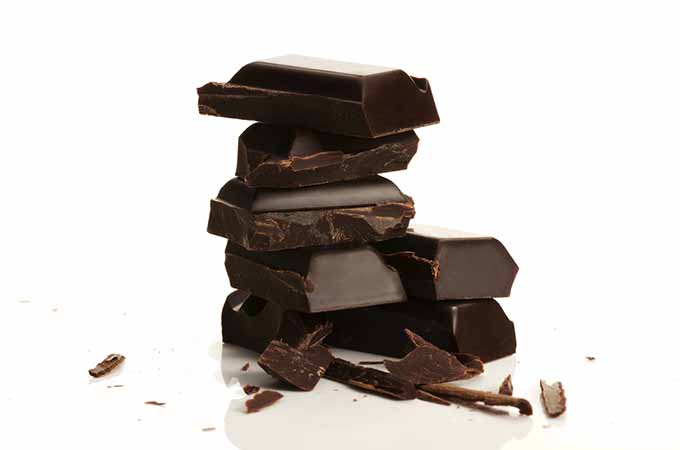
4. Dark Chocolate
Don’t think for a minute that chocolate is out of the question if you’re on a diet or trying to improve your overall health by eating nutritious foods.
Dark chocolate has a number of proven health benefits. It increases the blood flow to your heart and brain, helping to lower blood pressure, prevent blood clots and improve your cognitive function.
It contains flavonoids that can help prevent type-2 diabetes and antioxidants that prevent damage to your cells by free radicals.
It also contains high levels of copper, magnesium, iron and potassium to help prevent strokes, anemia and high blood pressure.
Are you convinced? If so, feel free to indulge in 150 calories’ worth of dark chocolate a few times a week for the greatest health benefits and to settle down your sweet tooth.
It’s the cocoa solids in dark chocolate that provide the best health benefits, so it’s essential to look for dark chocolate that has at least 70 percent pure cocoa.
Avoid chocolate that contains coconut, milk or palm fats. Instead, look for cocoa butter in the ingredients list, which won’t affect your cholesterol.
Your best bet is to avoid the kind of dark chocolate you find at the checkout stand at the grocery store, and instead look for high-quality bars made by a quality chocolatier. You can easily find these chocolates in better candy and health food stores.
One ounce of dark chocolate has 150 calories. If you like flavored chocolate, don’t be shy about trying dark chocolate with natural orange, chili pepper or mint flavors.
If you’ve never had high-quality dark chocolate, you may be disappointed at first, because its flavor is quite different from low-quality dark chocolate and milk chocolate. Keep your chocolate at room temperature. Smell it before you eat it, as the aroma is a major part of the flavor. Let the chocolate melt in your mouth to let the cocoa butter come through and mute the bitterness.
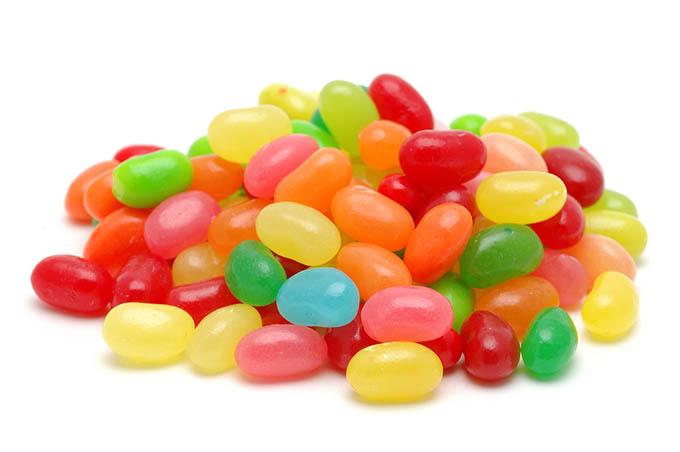
5. Hard Candy
The great thing about hard candy, which in this case includes jelly beans, licorice wheels and other such confections, is that it’s high in flavor and low in calories.
Better yet, it lasts a long time in your mouth, so you get more bang for your calorie bucks.
One piece of hard candy has about 20 calories. Seven pieces will only set you back 140 calories or so, and if each piece lasts, say, seven minutes in your mouth, that’s almost an hour of sweet indulgence. Sugar-free hard candy has even fewer calories.
To make 20 servings of your own hard candy at 120 calories per serving, combine 2 cups sugar, 1 cup water and ¾ cup light corn syrup in a 2-quart, heavy saucepan on medium heat and stir constantly until the sugar is dissolved.
Stop stirring, lower the heat a bit, and bring the mixture to 300 degrees, known as the “hard crack” stage.
Remove the mixture from the heat and add ½ teaspoon of flavoring oil and a drop or two of food coloring, if you don’t want your hard candy to be more or less clear.
Pour the mixture into a shallow buttered pan. As soon as the candy has cooled and hardened slightly, cut it into pieces with a clean pair of kitchen scissors.
If it begins to harden too fast, set the pan on top of a pot of boiling water. Toss the cut pieces in powdered sugar to prevent them from sticking together.
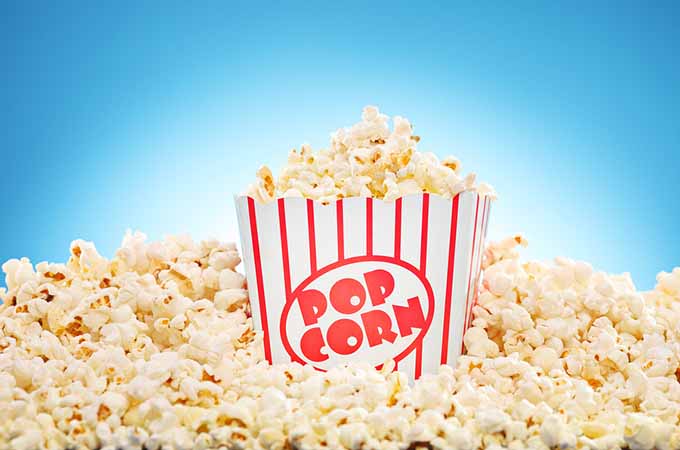
6.Kettle Corn
If you’re a fan of the combination of sweet and salty flavors, kettle corn might just be your new best friend.
Kettle corn is basically sweetened popcorn. At 125 calories for two and a half cups of this sweet and salty snack, you can’t go wrong.
Popcorn is a whole grain containing a lot of fiber and complex carbohydrates, and it’s one of the healthiest snacks out there when you make it at home using canola or vegetable oil.
On its own, popcorn is delicious and nutritious, but add a little sugar and it becomes a whole universe of sweet, crunchy satisfaction.
To make your own kettle corn, pull out a heavy, deep pot with a lid. Combine in the pot ½ cup oil, two tablespoons of water, ¼ cup of white sugar and 2/3 cup un-popped white popcorn kernels.
Cover the pan and turn the heat to medium high.Shake the pan regularly until the kernels start to pop, then shake it constantly until the kernels are popping every 2 seconds.
Remove the pan from the heat and shake it until the popping stops. Immediately pour the popcorn into a bowl. Sprinkle it with salt, and enjoy it warm.
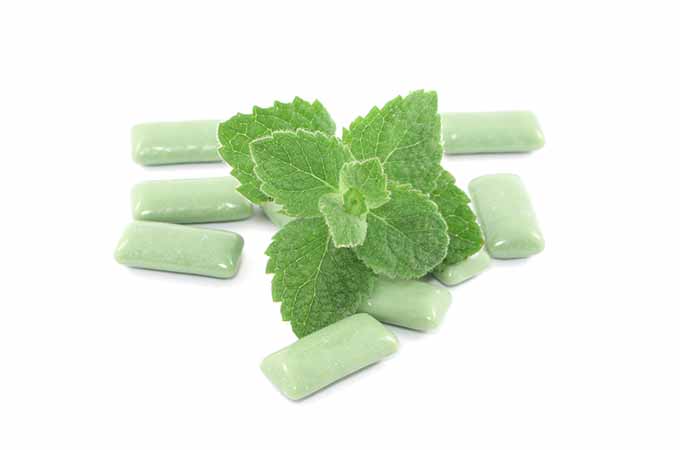
7. Sugar Free Gum—5 Calories
When you’re feeling hungry but can’t grab a snack for whatever reason, reach for a stick of sugar-free gum, which contains only five calories per piece.
According to the National Institute of Health, chewing a piece of gum can help distract your mouth from wanting food, as well as help prevent cravings for sweets.
Gum is inexpensive, easy to find and it has a very long shelf life. You can tuck away a pack of gum in the places you tend to need it the most.
Keep a pack in your car, in your desk at work, in your purse and anywhere else you might find yourself needing a little pick-me-up.
Chewing gum has several benefits. It activates the production of saliva in your mouth, which helps to wash away the acids that contribute to tooth decay and plaque buildup.
Research has found that chewing gum aids in concentration and increases alertness.
If you tend to eat your stress away, sugar-free gum can help reduce the anxiety and stress that often results in overeating.
In fact, a 2008 study by researchers at Swinburne University in Melbourne found that chewing gum actually reduces the stress hormone cortisol, making you feel calmer and more alert.
Most sugar-free gum is sweetened with aspartame, which was approved for human consumption by the FDA in 1981. However, aspartame can cause some uncomfortable side effects, including headache, nausea, dizziness and a change in mood.
Two hundred times sweeter than sugar, aspartame should be avoided by women who are pregnant or breastfeeding, as well as by those on antipsychotic, antidepressant or antispasmodic medications.
Excessive gum chewing can lead to jaw problems, including TMJ, a condition that makes opening and closing the mouth difficult and painful, and that requires surgery to correct. So chew it when you need it, but give your mouth a rest regularly to prevent jaw damage and fatigued jaw muscles.
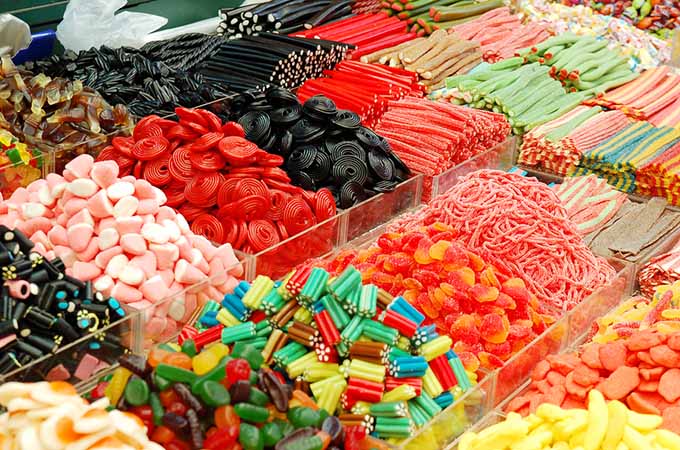
8. Sugar-Free Hard Candies
If you love to savor hard candies but are concerned about the sugar content, you’re in luck: sugar-free hard candies are wildly popular among those with diabetes and parents who don’t want to end up with astronomical dental bills that often result from the sugar habits of children.
Sugar-free hard candy, like sugar-free gum, is made with artificial sweeteners, typically aspartame.
Excessive quantities of this sugar alternative can have negative effects on the body, such as bloating and diarrhea, so eating sugar-free candy in moderation is essential to protect your health.
You can eat a whopping 75 sugar-free jelly beans for a mere 150 calories. Four Jolly Rancher hard candies weight in at only 35 calories.
Five sugar-free Werther’s Original candies have a total of 40 calories, and ten sugar-free mints have only 50 calories, making sugar-free candy an ideal substitute for sugar-laden, high-calorie sweets.
Since they last a long time in your mouth, sugar-free candies are ideal for staving off hunger pangs, distracting your mind from food and reducing cravings for sweets.
To make your own sugar-free hard candy, combine 1-1/2 cups of sugar free syrup and one cup of maltitol. Bring it to a slow boil in a heavy saucepan and heat it to the hard-crack stage, 300 degrees.
Remove the pan from the heat and add ¾ teaspoon of your flavoring oil of choice, as well as a couple of drops of food coloring. Mix the coloring and flavoring oil thoroughly into the mixture and pour it into candy molds and refrigerate for two hours. Store your homemade candy in an airtight container.
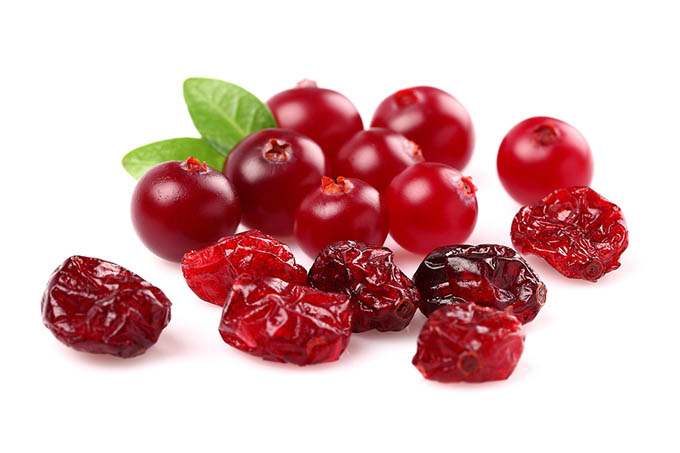
9. Dried Fruit
Dried fruit can satisfy a sweet tooth better than fresh fruit. That’s because when the water is removed from fruit, the sugars are more concentrated.
It’s a myth that dried fruit has fewer nutrients than fresh fruit. In fact, when it comes to some fruits, like apricots, the nutritional value increases. A third-cup of dried fruit has about 150 calories.
If you purchase store-bought dried fruit, look for brands that don’t add extra sugar. The sugars in the fruit are unrefined, but added sugar means refined sugar, which is best to avoid whenever possible.
The best fruits for drying are apples, apricots, mangoes, cherries, papayas and blueberries. Drying your own fruit is simple, and it’s less expensive and healthier than purchasing it already dried. Choose fruit that is ripe or slightly overly ripe for the best flavors.
First, prepare your fruit. Wash it and remove any blemishes or bruised areas. Remove pits, stones and stems. Skin peaches, apples, mangoes, papyas and apricots.
An easy way to do this is to score the bottom of the fruit in an X shape, give it a 30 second bath in boiling water and dump it immediately into a bowl of ice water. The skins should slide right off.
Slice your fruit evenly to ensure it dries consistently. Place the fruit in a bowl, add water to cover and squeeze in the juice of a lemon. This will keep it colorful and looking fresh. Blot the fruit dry with paper towels or a lint-free towel.
Preheat your oven to 150 degrees. Lay your fruit in a single layer on a cookie sheet covered in parchment paper. Lay a silicone pan liner over the fruit to keep it flat as it dries.
It takes between 6 and 10 hours for the fruit to dry. Turn the pan every couple of hours for even drying. The fruit is done when it feels leathery but is still bendable.
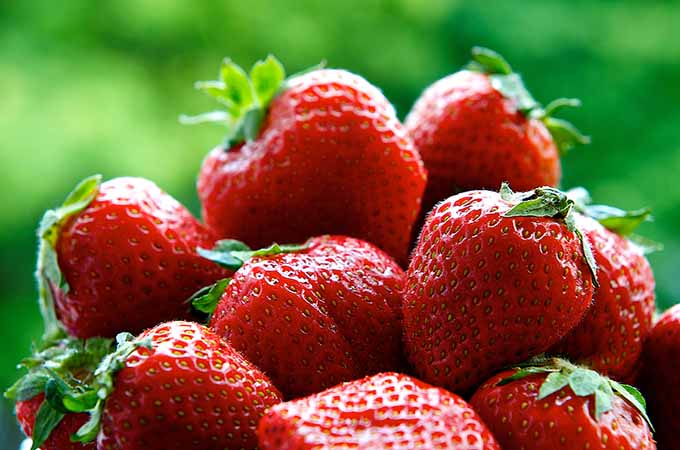
10. Strawberries
Strawberry season is highly revered by adults and children alike, and these sweet fruits are a super healthy snack.
Like cherries, strawberries have about 5 calories each, which means you can eat 30 of them without going over the 150-calorie mark.
One cup of strawberries provides 160 percent of your daily Vitamin C requirements and 3 grams of fiber, but that’s not the only health benefit they offer.
Strawberries are high in antioxidants to protect and repair the damage that free radicals do to your cells.
They’re also loaded with the trace chemical manganese, which helps maintain healthy bones, help your body absorb calcium and help maintain the proper functioning of your sex hormones.
They’re also high in potassium and folate to help form bone mass.
Strawberries all by themselves are delightfully sweet, but if 30 strawberries are too many for you, and you’ve set aside 150 calories for a sweet snack, have a decadent slice of strawberry shortcake.
Slice 8 strawberries (40 calories) and coat them with one teaspoon of sugar (15 calories.) When the juices begin to emerge, pour the strawberries over a one-ounce slice of angel food cake (70 calories) and top with two tablespoons of Cool Whip (25 calories.)
You can also pour this sweet strawberry mixture over a half cup of lite vanilla ice cream for another delicious, 150-calorie snack.
Whenever possible, opt for certified organically grown strawberries to avoid ingesting traces of chemical pesticides.

